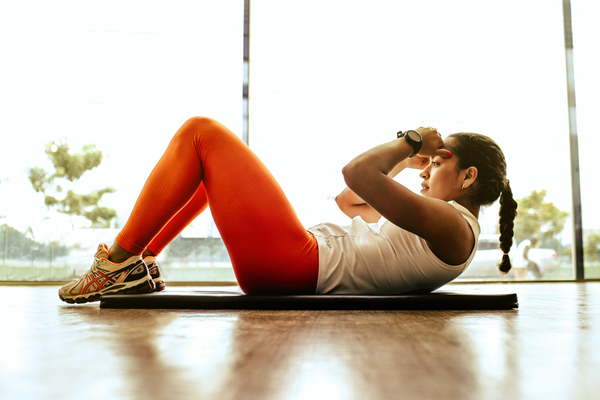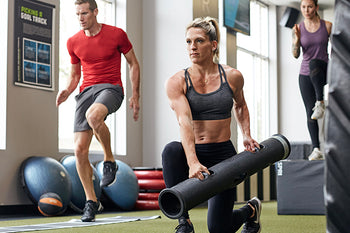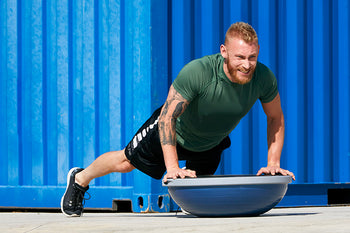Exercise Prep - Strands Routine

by: Jonathan Ross - SPRI Master Instructor
Two joints are responsible for creating and controlling most of the mobility you experience in a workout: Your hips and shoulders. These two joints move through a large range of motion and in many directions.
Big range of motion also creates a need for control. And the best kind of control is the kind you get for free. The kind where you aren’t consciously controlling your moves and thinking too much. Strands help you get that control.
“Every action has an equal and opposite reaction” is one of the few foundational physics principles that most people know, even if they slept through physics in high school. When you push on Strands, they push back. Working against the elastic resistance in the Strand provides an automatic response of muscle activation, and if we apply this in the right place, we create automatic action where we want it. This action helps “wake up” muscles that create and control movement at the hip and shoulder – right where we want it to get ready for a fantastic workout.
Here is an efficient and effective series of moves to prepare your hips and shoulders for a great workout.
1) Front-to-Back Lunge with Abduction – 5 reps each
How To Do It: Put feet all the way through each of the #5 loops on a long Strand or the unmarked loops on a short one. Keep one foot stationary, lunge forward and backward with the other foot while keeping tension on the Strand throughout the movement.
Why It Works: This movement switches on all the hip muscles since it uses all of the possible actions of the hip in addition to providing single leg activity. (Note: if using a long Strand, hold the slack outside of your legs with your hands.)
2) Web squat – 15 reps
How To Do It: Wrap the long Strand around the front of your knees, then around and behind your knees, crisscrossing the ends. Loop your hands through the #1 or 2 loops at each end, keep your palms facing forward, and tension on the Strand at all times. Squat while driving the knees outward against the elastic resistance of the Strand.
Why It Works: This engages more hip action on a squat. And for squats your “booty is the boss.” Or, it should be, if you want to maximize performance and minimize knee strain.
3) Single Arm Side Chop – 5 reps each
How To Do It: Loop your hands through either the appropriate loops on opposite sides of the central SPRI logo (3-3 easiest; 3-4 harder; 4-4 hardest) and hold arms overhead outward on an angle. Hold one arm stationary to provide anchoring for the other arm which will performing a chopping movement down and to the side.
Why It Works: You will feel your shoulder blade react to the Strand resistance by tracking appropriately with the upper arm movement. This makes teaching proper body mechanics “free” since it requires no extra effort.
4) Ski Jump Squat – 15
How To Do It: Keeping the hands looped from the previous exercise, lower the arms down and to your sides. Drive shoulders backward so the Strand gently touches your butt as you squat. If the Strand presses firmly into your rear, your arms are rotated forward and not in line with your torso.
Why It Works: This movement emphasizes posture when squatting by providing direct feedback on your torso and shoulder position via the contact on your butt from the Strand. Great way to integrate hip, torso, and shoulder activity to prepare for effective movement.
5) Lateral Resistance Overhead Press – 10 reps
How To Do It: Hold arms in an overhead shoulder press position with hands looped according to the same options in exercise #3. While pushing gently outward into the Strand resistance, extend your arms overhead.
Why It Works: The outward push against the Strand helps drive the shoulder blades back and out of the way to allow for more clearance for the upper arm to move overhead.
Better Every Day Wrap Up
Now go get ready. In just a few minutes of putting your Strands to use, you’ll effectively prep your hips and shoulders to deliver a great workout experience. By moving the joints that move you most, a successful workout is guaranteed.
Leave a comment
Comments will be approved before showing up.
Also in Blog

Training for Swimmers with Haven Shepherd






